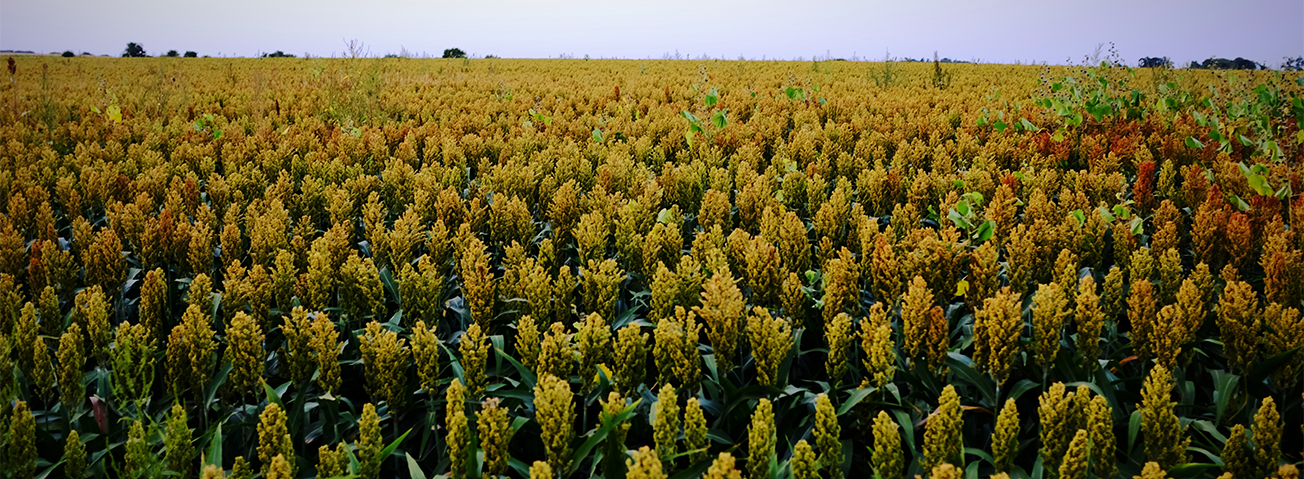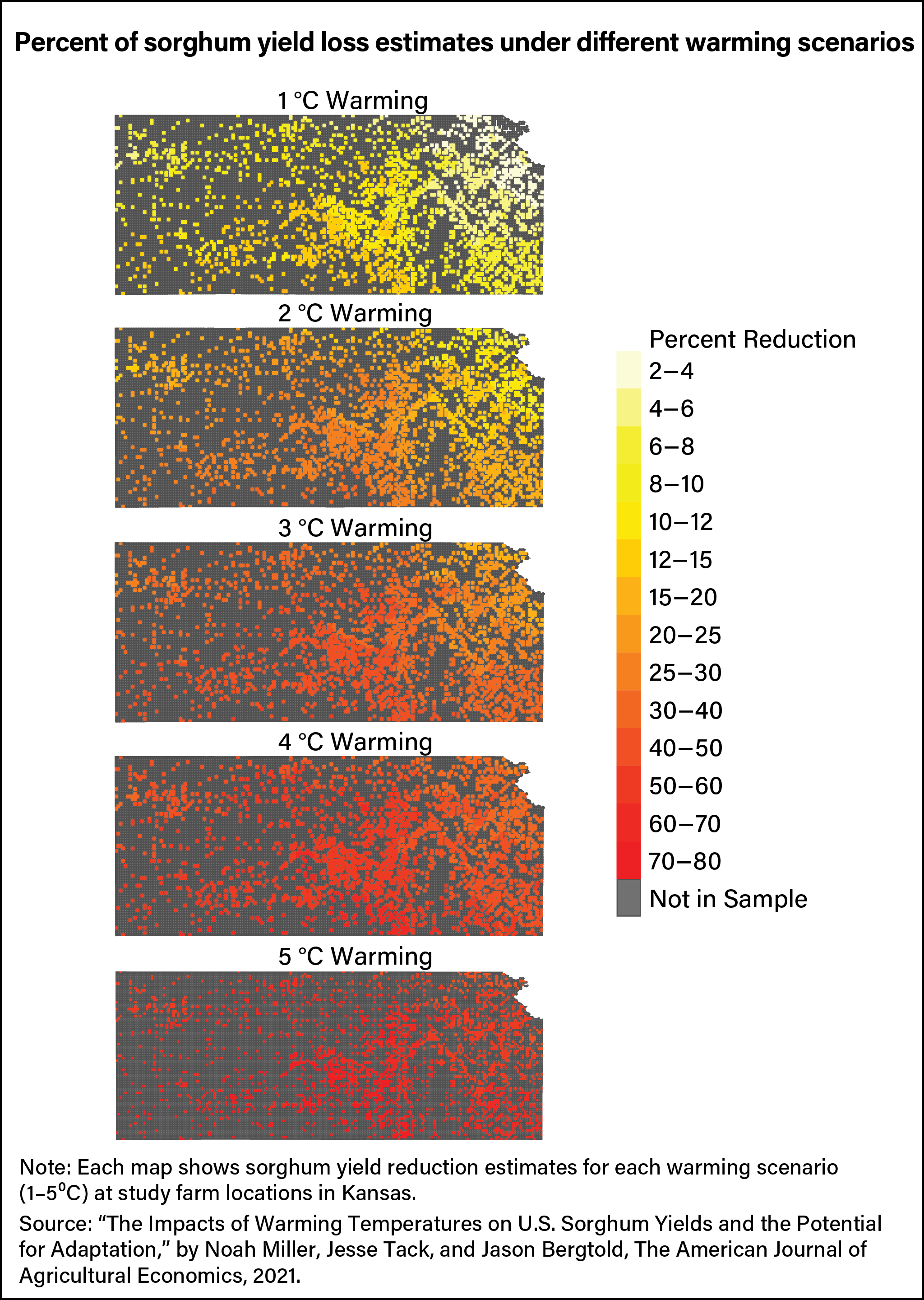
Sorghum Production Susceptible To Yield Damages From Extreme Heat
- by Noah Miller
- 2/7/2022
The five primary feed grain crops grown in the United States are barley, corn, oats, sorghum, and soybeans. In the Southern Great Plains, a substantial amount of sorghum production is used as an alternative crop to corn for livestock feed because of its similar nutrition content and its reputation of being better able to withstand hot and arid weather conditions. Researchers at USDA, Economic Research Service and Kansas State University matched historic farm-level data drawn from the Kansas Farm Management Association to growing season weather data to estimate the effects of temperature on sorghum yields.
The researchers estimated a statistical model that linked yields to low (0–10 degrees centigrade (⁰C)), moderate (10–33 ⁰C), and severe heat (+33 ⁰C) levels and precipitation, and found that sorghum is highly sensitive to temperatures beyond 33 ⁰C. They then simulated different warming scenarios by increasing historic temperatures by 1–5 ⁰C increments and recalculating yields using the previously estimated effects. Under the most moderate warming scenario (+1 ⁰C), average sorghum yields decline by 11 percent; under the most severe warming scenario (+5 ⁰C), average sorghum yields decline by 67 percent. When accounting for different precipitation outcomes, researchers found that when warming is accompanied by lower-than-average precipitation, yield losses do not substantially increase. Yield loss is partially abated when warming is accompanied by higher-than-average precipitation. These two findings suggest that severe heat drives yield loss in sorghum rather than drought, and heat-induced yield losses can be partially offset by irrigation. Notably, these results hold even when additional weather, such as vapor pressure deficit, and economic variables, such as input/output price ratios, were included in the model.
Shifting planting and harvesting dates have the potential to mitigate the effects of rising temperatures brought on by climate change. To test this, the researchers simulated adjustments to sorghum’s growing season and found that earlier planting and harvesting dates diminish yield loss but only marginally: Under +2 ⁰C warming and an unaltered growing season, acreage-weighted average yield losses are estimated at 24 percent; under +2 ⁰C warming and a shifted growing season, acreage-weighted average yield losses are estimated at 22 percent. The researchers considered additional alterations of the growing season, including shortening and extending the growing season, but found that no alteration of the growing season provided substantial reductions in yield losses. The results of this research indicate that sorghum, like other row crops, will face major yield losses under projected warming, and that these losses cannot be easily offset by farmers’ adjustment of planting and harvesting dates.
This article is drawn from:
- The Impacts of Warming Temperatures on U.S. Sorghum Yields and the Potential for Adaptation. (2021). The American Journal of Agricultural Economics. (103):5, pp. 1742-1758. Miller, N., J. Tack, and J. Bergtold. 2021..



